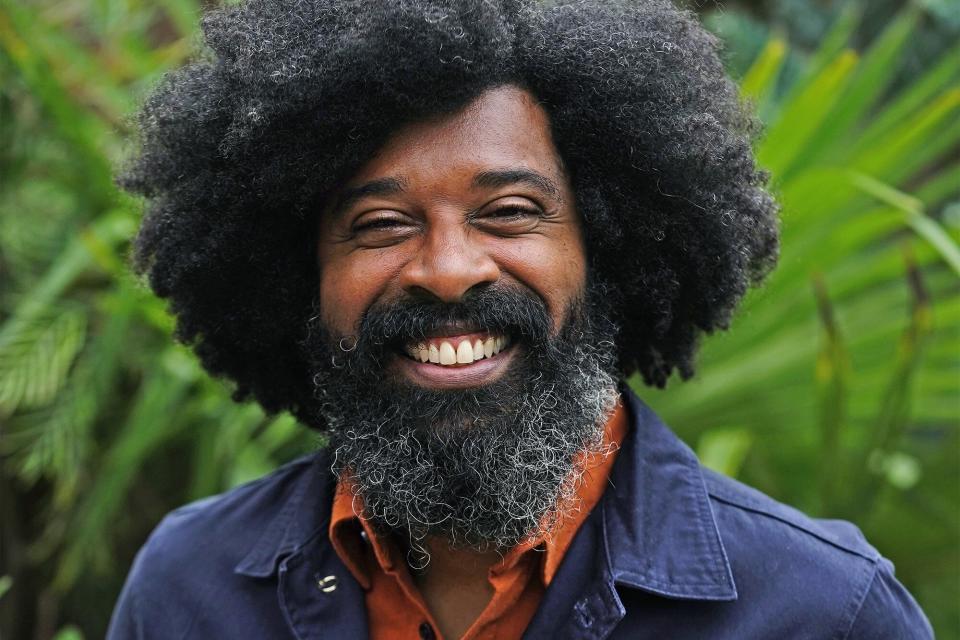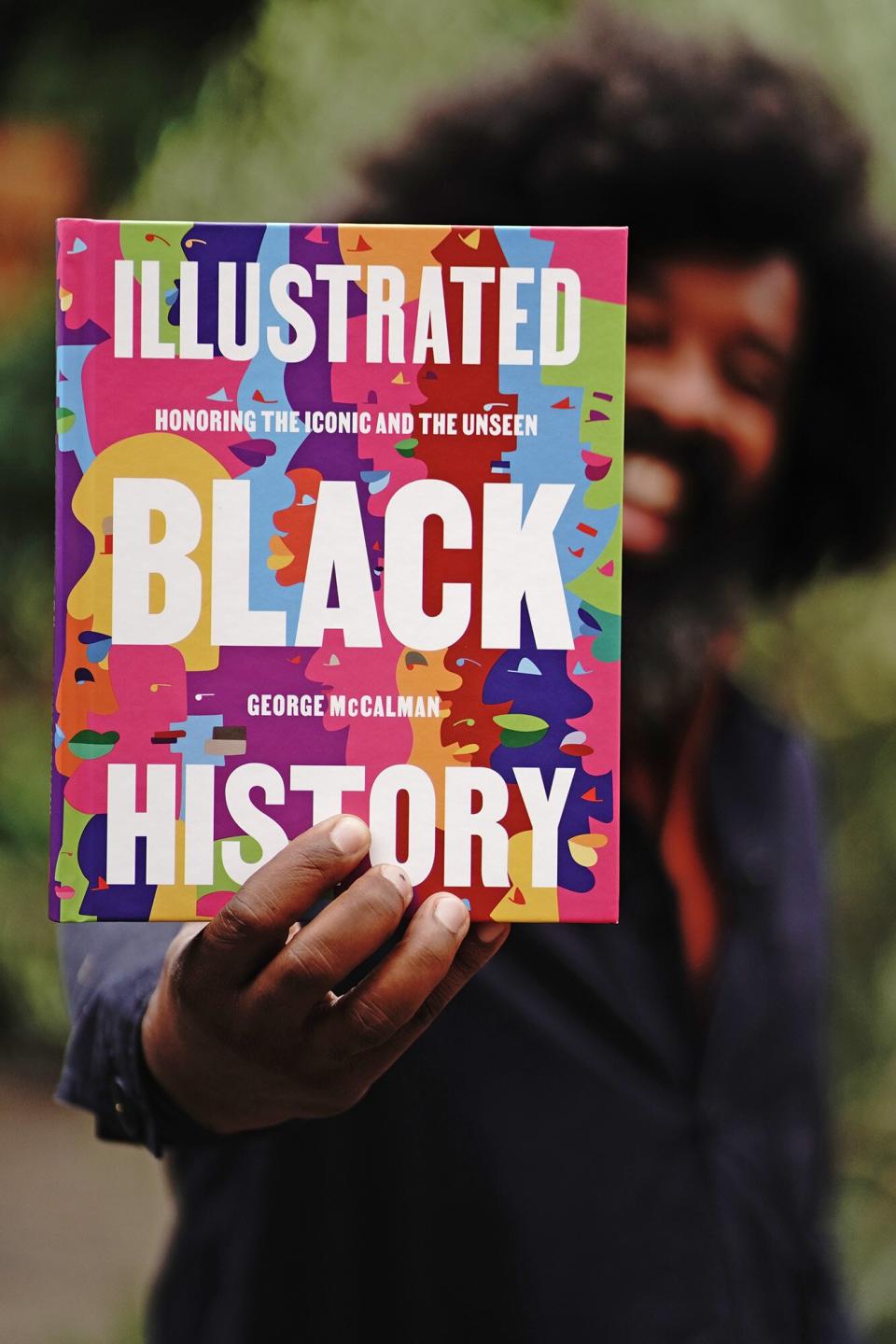Artist George McCalman wants his new book to be an 'accessible Bible' of Black history
When artist George McCalman set out to illustrate Black history pioneers, he had the impossible task of cutting his list of 500 names down to 145. "I learned to rely on my instincts and curiosity about the stories that each pioneer revealed," McCalman, 51, tells EW. "I just went with the feeling of who I wanted to know more about."
Illustrated Black History, out now, came from what McCalman says was his "professional experience as an art director tethered to his personal interest in identity." The book features his illustrations of 145 figures integral to Black American history, along with their stories and accomplishments. Among those included: James Baldwin, documentarian Madeline Anderson, Colin Kaepernick, and the first Black person to travel into space, Guion S. Bluford.
EW spoke to McCalman, an EW alum, about the urgency he felt when creating the book, why he chose to focus more on the "unseen" than the "iconic," and what he hopes readers will take away after reading it.

Baidi Kamagate Artist George McCalman
ENTERTAINMENT WEEKLY: What inspired you to create this book?
GEORGE MCCALMAN: The origin of this book was less inspiration than urgency. I did a series of paintings six years ago, one a day, of Black History pioneers I wanted to learn more about. Several people in my inner circle suggested I make a book — I'm an art director/graphic designer, so that suggestion is a common thing in my world. I discovered that there was no book outside of children's books and academic tomes, which is evidence of the value placed on this subject matter. So I felt a deep sense of agency and urgency. I had to do it.
How did you find your own illustration style?
I'm a classically trained painter. I went to university for fine arts, but left the desire to be an artist out of a practical sense of immigrant pride: I wanted to focus on making a living; and at that time in the mid-90s there weren't a lot of people in the commercial illustration in a fine art world that looked like me. It's been stored inside of me for the 20 years that I focused on my design career. So when I started making these portraits, I felt fully formed on the inside. What I learned all those years later is that I don't have one singular style. I apply the context of what I'm doing to the art that I'm making. It's the opposite of how I was trained, and I'm glad I divorced myself from feeling pressure to conform to one way of being an artist.
How did you choose the Black pioneers you highlighted?
[It was] nerve-racking. I had a larger list of close to 500 names, and had to [cut it down] to 145 profiles. I learned to rely on my instincts and curiosity about the stories that each pioneer revealed. I just went with the feeling of who I wanted to know more about. This book is actually more about the unseen than the iconic. I really wanted to focus the telling on stories that most people didn't know that much about.

Baidi Kamagate
Do you have a favorite illustration from the book?
No. I hope I never do. I'm just too close to all of them.
Are there any subjects that you wish you could've included in the book but they didn't make the final cut?
Yes. So many incredible subjects! Too many to list here. Names for the second volume of Illustrated Black History.
What do you hope readers will take away from this book after finishing it?
That this is American history. Period and full stop. There is a narrative that is as divided as everything else in our current culture, where Black history is a separate thing. The entire philosophy that drove me through the four years of making this book is I want this book to be in every home in America. It is for every single person. These subjects all contributed to the fabric of the America that we all take for granted. I wanted there to be an accessible Bible that celebrated them.
Related content:

